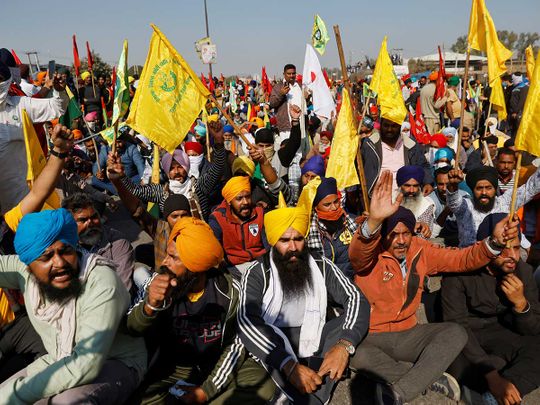
Since October, tens of thousands of farmers in India are protesting against three new laws that directly or indirectly impact agriculture sector in ways few have understood, given the complexity of these legislations. For over a fortnight, the farmers have squatted on highways leading to New Delhi and are threatening to block all entry and exit points.
They have slept on the road, braving cold weather and water cannons and are ready for a long standoff. The farmers have arrived in the capital with food rations loaded on trucks, bread making machines and have a well-oiled support system to sustain the agitation for months.
The intensity and scale of the protests, largely peaceful so far, has surprised the government that was not expecting such widespread anger. The protests are led by Sikhs, a minority that dominates agriculture sector in northern states of Punjab and Haryana.
Consultations, both inside and outside Parliament, are key to consensus building in a democracy. In recent days, the government has shown willingness to address farmers’ concerns, a gesture that should be welcomed by the farmers’ unions and both sides must work together to resolve the impasse
These protests are the biggest challenge to Prime Minister Narendra Modi’s government since the mass agitation against India’s National Register of Citizens early this year.
The three farm laws, many say, are the most ambitious since the 1991 economic reforms when India opened up its economy to global investments. The government believes these laws will lead to massive investment in cold chains, warehouses, eliminate middlemen and help farming community in a big way, an argument forcefully rejected by farmers.
They fear powerful corporates will take over farm lands and the new laws will aid cartelisation in agriculture sector that employs around 41 per cent of country’s workforce and contributes to 18 per cent of the GDP.
Jury is still out
While the jury is out on benefits, there is no doubt that the new laws will dramatically alter the way farmers sow and sell their crops. The public opinion on farmers’ agitation remains divided and the protests reflect complexities involved in introducing sudden high impact reforms in India.
To overcome these challenges, India will have to reconsider both the pace of reforms and the manner in which they are introduced. The protests show that legislative muscle alone will not guarantee wide acceptance of reforms.
Consultations, both inside and outside Parliament, are key to consensus building in a democracy. In recent days, the government has shown willingness to address farmers’ concerns, a gesture that should be welcomed by the farmers’ unions and both sides must work together to resolve the impasse.








